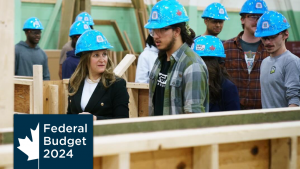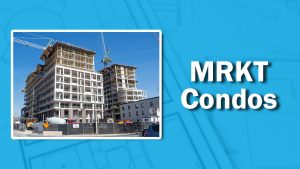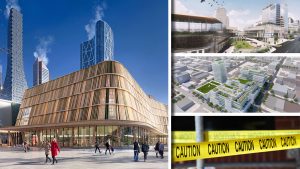TORONTO — Ontario Premier Doug Ford has cited a huge drop in attendance and “run down” infrastructure at the Ontario Science Centre as part of his justification for moving the attraction from east Toronto to a redeveloped Ontario Place, but certain documents present a fuller picture.
Reports from the science centre itself show attendance has been rebounding post-pandemic lockdowns, and small annual decreases in attendance in the years before COVID-19 are attributed to nearby construction of a provincial transit project and not having enough money for marketing.
The size of the science centre’s operating grant from the Ministry of Tourism, Culture and Sport appears to have been frozen for the past 10 years, based on government expenditure estimates. Minister Neil Lumsden’s office did not provide an explanation for not increasing the funding, but noted the attraction “benefits from other provincial supports” such as a capital repair and rehabilitation program.
Infrastructure Minister Kinga Surma has said a business case showed it will be more cost effective to move the science centre to Ontario Place rather than keeping it in the current location but has so far refused to make that business case public.
Ford has been citing a desire to modernize the facility and attract more people as reasons for the move, suggesting the centre is aging and fading from popularity.
“They’re in this old, run-down building (where) the attendance is down 40 per cent,” he said at a news conference recently.
“I can look around this room and ask how many people have gone to the science centre in the last, I don’t know, year, two years. One? I don’t see anyone.”
Those comments were uncalled for, said NDP infrastructure critic Jennifer French.
“Since COVID I know people are eager to get out and into their public spaces and give their kids something to do and the science centre has always been a favourite, so painting it in a negative light is kind of mean-spirited and unfounded,” she said.
Ford later clarified the attendance drop was 30 per cent, and his office said that figure comes from comparing 2012-13 figures to 2022-23. The decrease, however, is about 10 per cent when comparing 2012-13 to 2018-19, the last year unaffected by the pandemic.
Coming out of most of the pandemic lockdowns, onsite attendance for 2021-22 was 255,347 – well exceeding the centre’s target of 142,078 for that year, according to its annual report for that year, the most recent one available.
Attendance on Family Day weekend and March Break last year exceeded numbers for those dates in 2019 by seven per cent and 15 per cent, respectively.
According to science centre annual reports, attendance went up and down between 2012-13 and 2016-17, when it was 941,006. It then declined by four per cent, then another two per cent to 884,837 in 2018-19, the last year unaffected by COVID-19 restrictions.
The annual reports blame the drops on “insufficient funds for marketing” and construction at nearby Eglinton Avenue and Don Mills Road, where the Eglinton Crosstown LRT has been under construction for 10 years. It includes a “Science Centre” stop that would increase transit accessibility to the attraction.
The 2017-18 business plan also notes global factors.
“Visitor attendance at science centres, natural history museums and art galleries has been on a decreasing trend to varying degrees in recent years,” it said.
“There are many explanations for the decline – changing demographics, impact of technology, uncertain economic climate, busy lives, and increased competition – but there are no quick or easy solutions.”
The science centre’s 2017-18 business plan does note “the centre has had challenges in attracting the tourism market primarily as a result of location,” saying studies show visitors from outside the region come to the centre if they’re in Toronto for more than three nights.
Visits from Greater Toronto Area residents make up 68 per cent of attendance, with 16 per cent from elsewhere in Ontario and another 16 per cent from everywhere else.
Ford has said the science centre in its new location on Toronto’s waterfront will attract 115,000 more visitors per year.
The premier’s office said that number comes from an analysis that factored in a more accessible downtown location, being close to major transit and highway corridors, and having more space for exhibitions – despite the new location being in a smaller building. Ford’s office said exhibitions take up 25 per cent of the current centre’s space.
The government declined to provide a copy of that analysis.
When it comes to the state of repair, the government has not provided documentation to illustrate the maintenance needs on which it is basing its “run down” assessment.
The science centre’s 2017-18 business plan says 10-year deferred maintenance needs are $147.5 million, and that upgrades and asbestos mitigation are required.
“The bigger issue for the building conditions is the areas that Infrastructure Ontario is responsible for and the degree to which the centre is able to influence decisions related to building improvements,” it wrote.
That doesn’t mean the building is “run down,” French said, but if it is, the fault lies at the feet of Infrastructure Ontario – the science centre’s landlord – for not keeping up with maintenance needs.
“The Ontario Science Centre is doing their darndest to fundraise and bring in additional funds to cover anything that they’re allowed,” she said.
“That doesn’t set them up for the kind of success that we would expect from a beloved public institution.”
The science centre said specific questions about building repairs should be directed to the Ministry of Infrastructure, but the building, opened in 1969, is in need of “regular repairs due to its age.”
“We do regular maintenance and inspections to ensure our building is a safe place to work and visit,” a spokesperson wrote.
“We are looking forward to working with our staff, visitors and communities over the coming years to imagine what the new Ontario Science Centre will become.”
© 2023 The Canadian Press











Recent Comments
comments for this post are closed